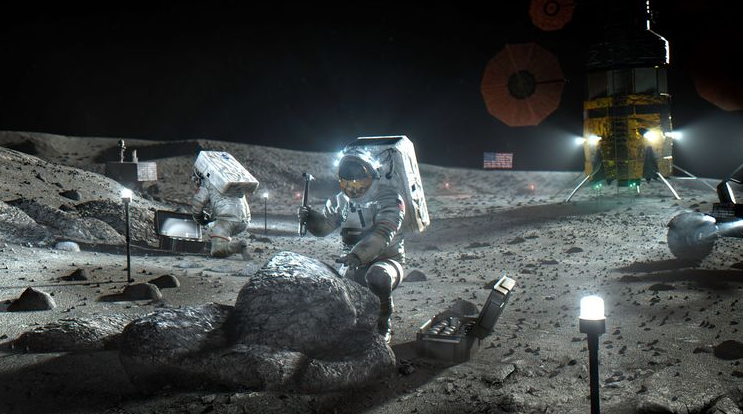“Space is not a legal vacuum. It’s not the Wild West. It should not be the Wild West.”
In a competition with other global nations including the United States, China, and India to learn more about the substances contained on the earth’s sole natural satellite, Russia launched its first moon landing spacecraft in 47 years on Friday.
What is the underlying motivation behind the significant interest exhibited by great powers in celestial matters?
Helium 3 : On Earth, helium-3 is an uncommon isotope of helium, but according to NASA, there are an estimated million tonnes of it on the moon. The European Space Agency claims that this isotope has the potential to produce nuclear energy in fusion reactors while without producing radioactive waste.
According to recent study, the moon contains rare earth elements such as scandium, yttrium, and the 15 lanthanides. These metals are extensively utilized in various technological innovations .
Although the idea of mining the moon may seem like it belongs in a science fiction book, it is very likely that this will be a reality in the not too distant future. Because of this, it has become a hot topic of conversation among space attorneys on Earth.

The Outer Space Treaty, which was developed during the Cold War and ratified by more than 100 nations including the United States, China, and Russia, sets the legal framework for moon mining. This treaty is one of many international agreements that control this practice. According to that agreement, “outer space, including the moon and other celestial bodies, is not subject to national appropriation by claim of sovereignty,” prohibiting nations from claiming possession of the moon. However, things become more challenging when trying to mine the moon for materials. When nations or private businesses acting on behalf of nations begin to mine the moon or asteroids for resources, legal experts are trying to determine just how that pact applies. Some might contend that by establishing a mining enterprise, you are actually asserting your sovereignty in another way , if it is possible to mine resources on the Moon, an international regime must be formed to control their extraction and utilization .
There has to be better awareness of how international law operates as countries move closer to having a presence on the moon and beyond.
By 2030, the Canadian Space Agency’s Artemis mission, led by NASA, plans to land people on the moon.
This time, the intention is to stay permanently rather than just to visit. This entails constructing a base camp at the lunar south pole as well as a lunar gateway, an orbiting spacecraft.
The International Lunar Research Station is a joint project between China and Russia that is currently developing a lunar outpost.
To the best of the author’s knowledge, this article is accurate and true. Content should not be used as a substitute for consulting with a lawyer or other qualified advisor in topics of business, finances, law, or technology. It is only for informational or entertaining reasons.







